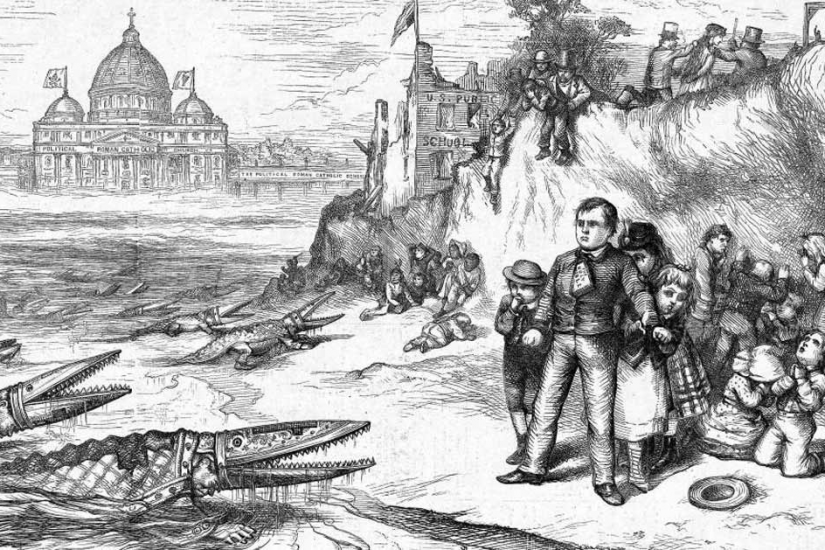It was never easy to separate the racial and religious components of anti-Catholic sentiment. Until the 1920s, America’s doors were open to European immigrants, as long as they qualified under a statute passed in 1790 that reserved naturalized citizenship for “free white persons.” Whether Southern and Eastern Europeans of darker hue—or all Catholics, whose presumed loyalty to Rome rendered them suspect candidates for democratic citizenship—qualified under the statute, seemed very much an open question.
As the immigrant landscape grew more complicated in the late 19th century, social scientists and politicians began attempting to classify Americans with greater precision. Whitness, it now seemed, was a matter of degree, and Europeans fell into categories like “Anglo Saxon,” “Celtic,” “Hebrew” and “Asiatic.” Importantly, this move toward racial classification drew heavily on the emerging fields of modern biology and chemistry. In this sense, modern science and social science were contemporaries—and close cousins—of modern racism.
In 1911 the famous Dillingham Commission on Immigration attempted to reduce the mass of new immigrant groups to a simple five-tier racial scheme (Caucasian, Mongolian, Ethiopian, Malay and American). But it wasn’t always so simple. In Volume 9 of its lengthy report, otherwise entitled A Dictionary of Races or Peoples, the commission backtracked and acknowledged that the U.S. Bureau of Immigration “recognizes 45 races or peoples among immigrants coming to the United States, and of these 36 are indigenous to Europe.”
Critically, many scientists and social scientists (the Dillingham Commission experts among them) agreed that race was determinative of behavior, intelligence and physical endowment, and that racial groups could be arranged in a hierarchical fashion. The Dictionary of Races or Peoples, for instance, characterized Bohemians as “the most advanced of all” Slavic race groups. The Southern Italian, on the other hand, it deemed “an individualist having little adaptability to highly organized society.”
Representative of this popular school of thought was the Station for the Study of Evolution, a think tank established by the Carnegie Institution in 1904 at Cold Spring Harbor (Long Island). The institute’s director, Charles Davenport, made it his life’s work to document the relationship between race and comportment. “The idea of a ‘melting pot,’” he wrote, “belongs to a pre-Mendelian age. Now we recognize that characters are inherited as units and do not readily break up.” From arguing that race was both determinative and qualitative, it was no great leap of logic to suggest some racial groups were better fit for citizenship than others.
